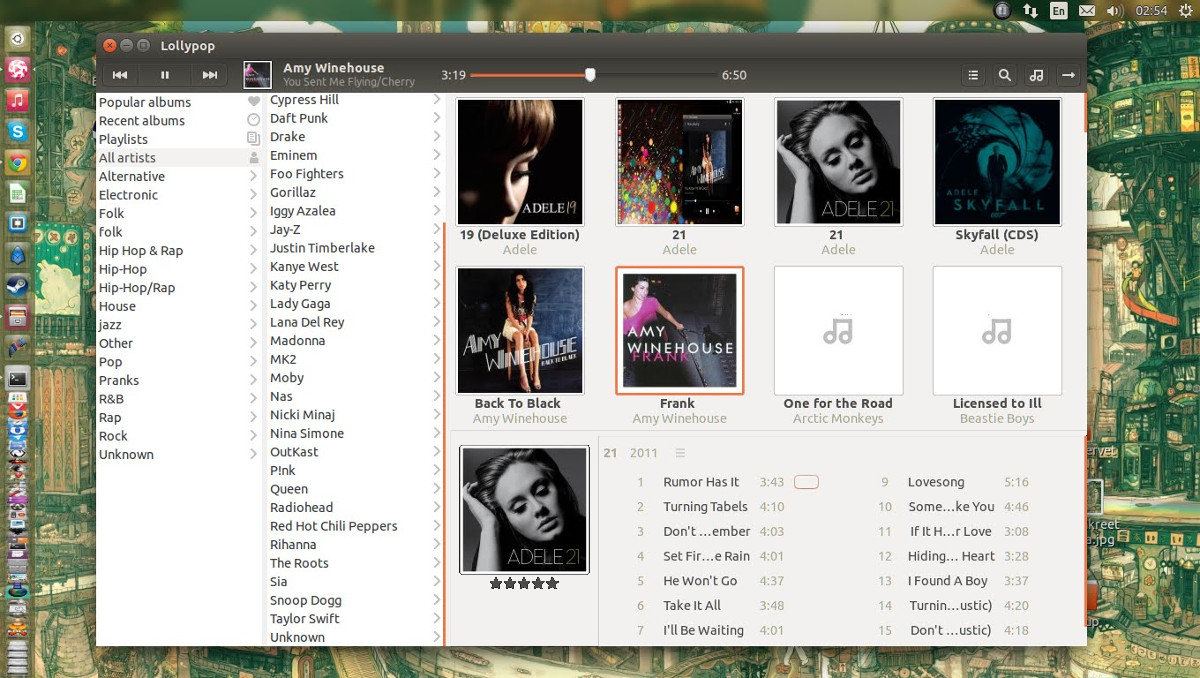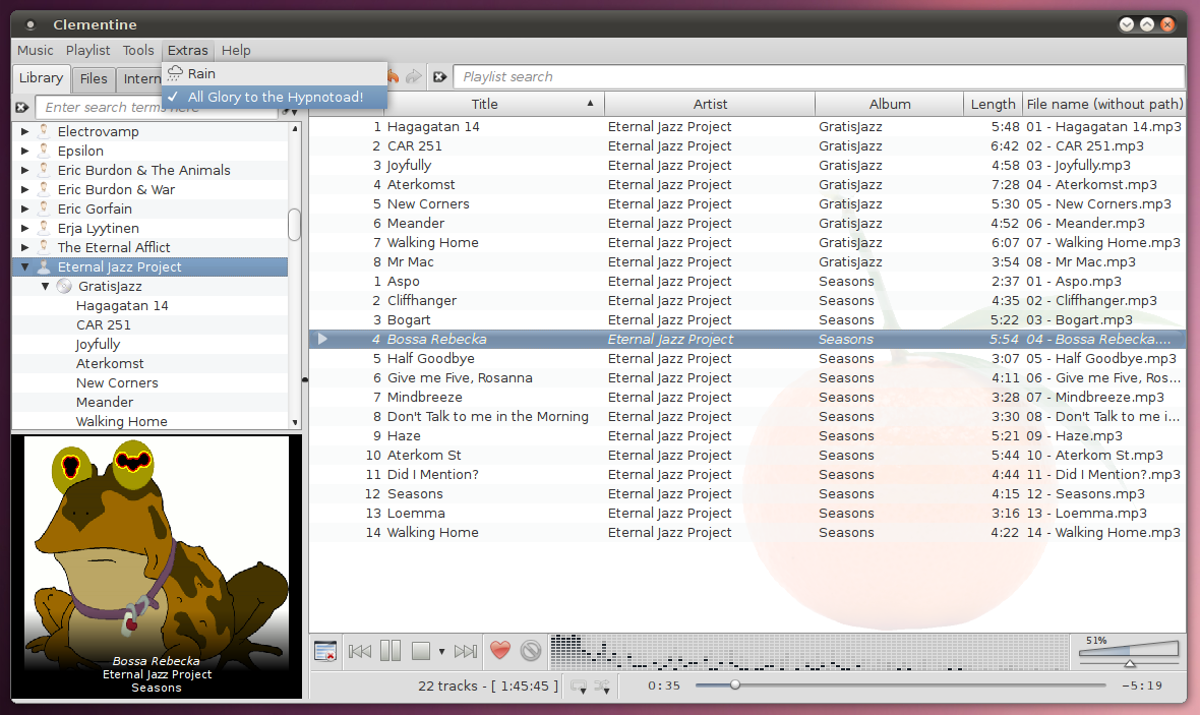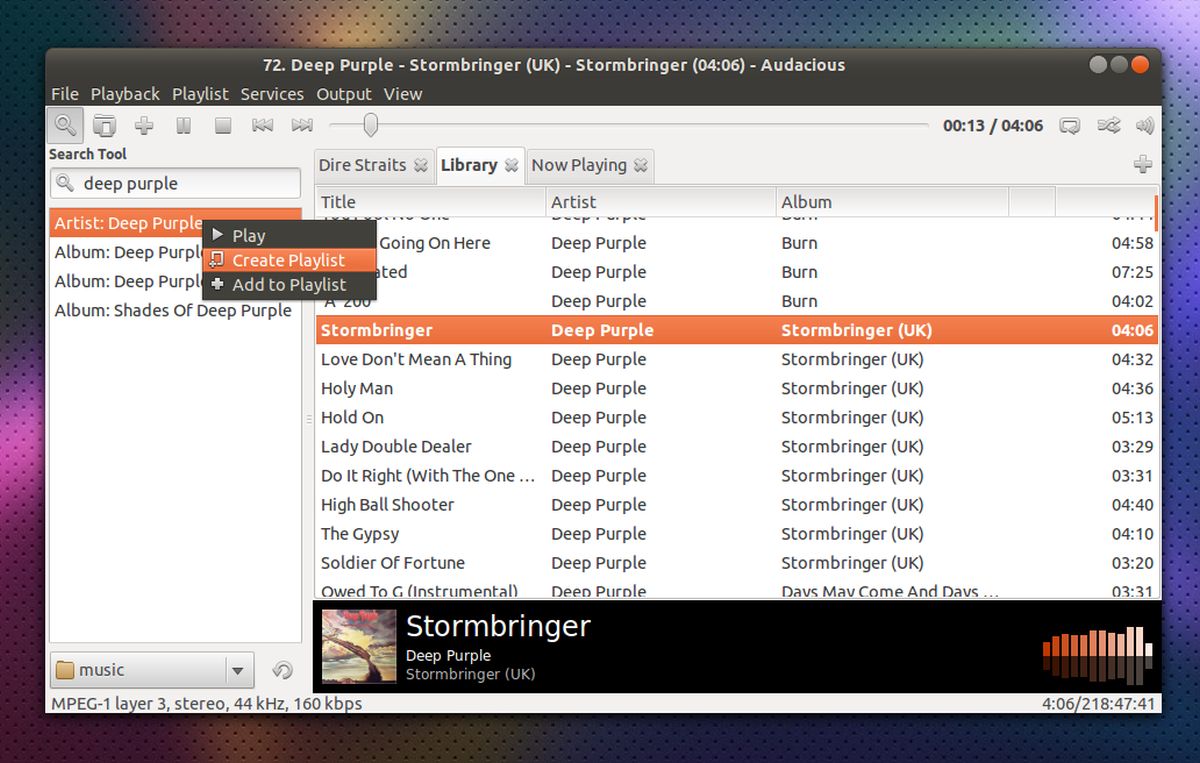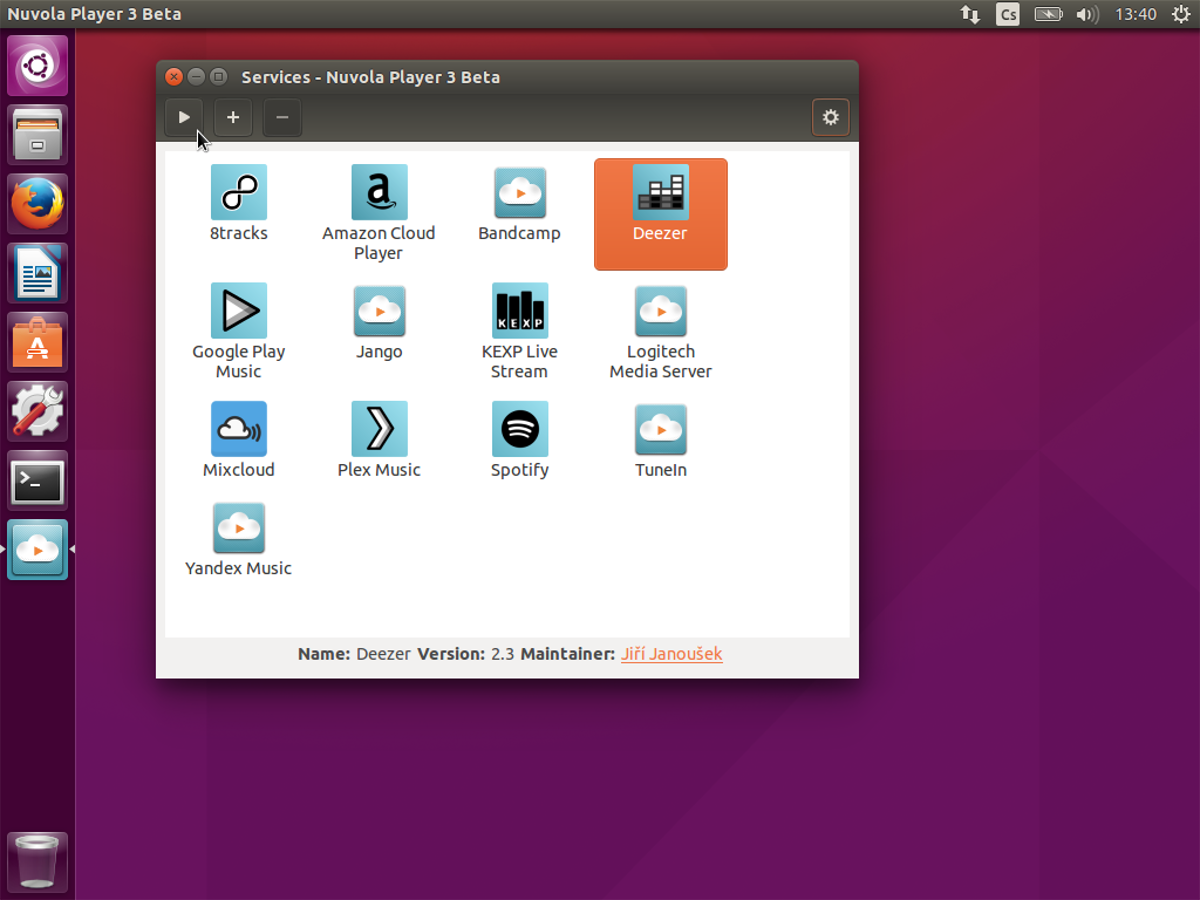6 Awesome Music Players For Linux
Finding a good music player for Linux can be challenging because there are so many to choose from. As a result, many Linux users often find themselves settling with whatever music player comes bundled with their desktop environment, or worse, the operating system’s default. The reality is, there are many great ways to enjoy music on Linux, you’ve just got to look a little! That’s why we’ve decided to go over 6 awesome music players for Linux. We’ll discuss which ones are worth using, where to download them, and more.
1. Lollypop

Lollypop is a modern Music management tool specifically built for the Gnome desktop. It’s main goal is to look modern and beautiful. Lollypop manages music is in 3 ways; users can browse music via a cover browser, by genre, or by artist. In addition, the Lollypop player supports a “party mode” that adds shuffle and easier access to playlists for parties. It supports for the Mp3, Mp4, Flac, and the OGG audio formats.
If you’re looking for a full-featured, “iTunes-like” music player for the Gnome Desktop environment, do check this one out.
2. Clementine

Clementine is a KDE Amarok clone that is perhaps one of the most “feature-filled” players in all of Linux. In addition to managing music, the Clementine player has direct support for online cloud services like Spotify, Google Play Music, Subsonic, GrooveShark, Sound Cloud and even services like Google Drive.
The music player is heavily inspired by the KDE Amarok player, and as a result has many similar features, such as: support for the music cataloging service Last.fm, MP3/Smartphone sync support, and etc.
If you’re looking for something that can do everything, Clementine is a great choice. The way it mixes local music and remote services is incredibly unique, and can’t be topped.
3. Audacious

Audacious is a simple, lightweight audio player that allows users to quickly open files, queue music, and make playlists. Unlike a lot of other music players on Linux, everything is focused on playlists. By default, there is no artist browser however users can add their entire library to a playlist and search it.
Audacious’ mission to make everything simple means that lightweight desktop environments with low resources can play music at an instant. This is perfect, as heavier music players on slow Linux machines means the user will have a sluggish experience.
4. Nuvola Player

If you love music but aren’t into keeping local files, or if you prefer Spotify, Google Music and other cloud based music services, Nuvola player may be just what you need. Unlike a lot of cloud-based music tools, Nuvola doesn’t center itself around just one. Instead, it has direct support for all kinds of services. For example: use Spotify? Click the Spotify button. Use something else? Select that option instead.
The benefit of using Nuvola Player is that it helps Linux users take remote music services and make them feel more local. Users can enjoy native Linux desktop notifications and great support desktop-environment specific controls.
5. Spotify Desktop

Though it may not seem like it, Linux users love Spotify. Years ago when the company released a beta version of the popular service for Ubuntu, people went crazy. They de-compiled it and re-packaged it for other distributions. In 2017, the Spotify service is still as popular as ever. Millions of users subscribe to it, including Linux fans. Users of the service enjoy robust radio stations, and on-demand music from all sorts of artists (both known and obscure).
Don’t let the “cloud” aspect of Spotify fool you, though. The Linux Spotify app can also manage your MP3 files. This means that even if you’re not a huge fan of paying for services, the Spotify desktop app is a great choice. Think free music with commercials, and a slick interface for your local media.
Those looking for a slick, central place to manage music files should seriously consider the Spotify desktop app on Linux. It might be proprietary, but it has a lot to offer.
6. Google Play Desktop Music Player

Are you a fan of Google Music but wish that you could have a dedicated app for it on the Linux desktop? With Google Play Desktop Music Player you can! Much like the Nuvola Player, GPDMP works very hard to bring the web version of Google Music to Linux. It has native desktop notifications, desktop environment integrations, and the ability to even customize the default look of Google Play Music. If you’re a fan of Google Music and use Linux, this is a great player to use!
Conclusion
Though you wouldn’t know it, Linux actually does music very well. No other platform offers a user quite as many diverse, and creative ways to organize music. On Linux, users can’t just “install iTunes”, and settle with it. Since installing iTunes is a chore on Linux, it allows users to explore and really search for a player that meets their needs, rather than just using whatever everyone else is using.
If you’ve been having trouble finding a music player that truly does what you need on Linux, look no further than the items on this list! You won’t be disappointed!
